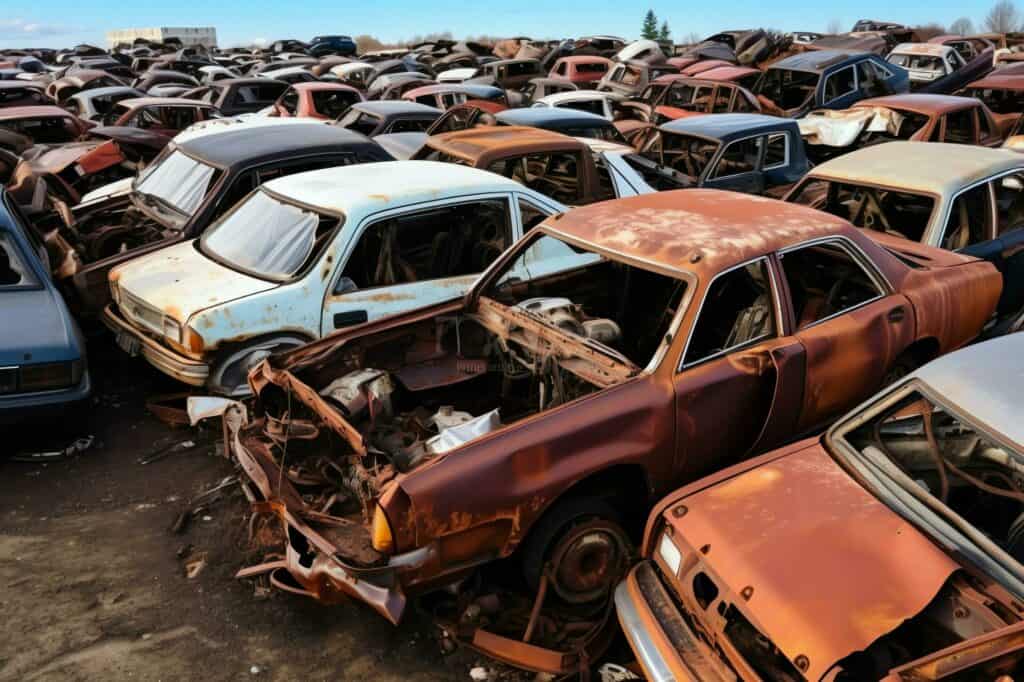Operating a scrap yard in today’s market presents a unique set of challenges that impact the efficiency, profitability, and sustainability of these businesses. While scrap yards play a vital role in recycling and waste management, helping to reduce the environmental burden of unused metal and vehicle parts, they also face a rapidly evolving landscape. Changing regulations, fluctuating metal prices, and rising operational costs are only some of the issues that owners must navigate. In this article, we will explore the primary challenges faced by modern scrap yard operators, shedding light on the complexities involved in running these essential businesses.
Navigating Regulatory Compliance
One of the most significant challenges for scrap yards is adhering to a complex set of local, state, and federal regulations. Laws surrounding environmental standards, waste disposal, and occupational safety require scrap yard operators to implement strict practices, often at a high cost. Compliance with these regulations not only demands that businesses keep up with legislative changes but also requires ongoing investment in specialized equipment and staff training to meet safety standards.
The cost of failing to comply with these regulations is severe, potentially resulting in fines, suspensions, or permanent shutdowns. Many scrap yard operators find themselves struggling to balance regulatory demands with profitability, especially when operating on thin margins. To remain compliant, scrap yard operators must regularly audit their processes, sometimes engaging legal experts to ensure they meet each requirement. While such compliance measures are essential to ensure safety and environmental protection, they add an additional layer of complexity to running a scrap yard.
The Impact of Fluctuating Metal Prices
Another critical factor that affects scrap yard profitability is the fluctuation of metal prices. Scrap yards generate revenue by selling salvaged metals and vehicle parts, and when metal prices fall, so does their income. Unfortunately, metal prices are influenced by global markets, economic trends, and geopolitical events beyond the control of individual scrap yard operators. These fluctuations can be drastic, making it difficult for scrap yards to predict their revenue and plan for the future.
When prices fall, some scrap yards are forced to sell metal at a loss just to keep operations running. This volatile pricing makes it challenging to maintain consistent revenue, especially for smaller scrap yards that lack the financial resources to absorb such shocks. To mitigate this issue, many scrap yards establish long-term contracts with buyers to stabilize income, but not all are able to secure such arrangements, leaving them exposed to the unpredictable nature of global metal markets. Learn more
Rising Operational Costs and Labor Shortages
Operating a scrap yard is a labor-intensive business that relies on skilled workers to handle, sort, and process materials safely and efficiently. In recent years, many scrap yards have faced challenges in attracting and retaining qualified workers. With the demand for skilled labor rising across various industries, scrap yards often struggle to offer competitive wages that can attract experienced staff. Additionally, the work environment in a scrap yard can be physically demanding and sometimes hazardous, which may deter potential workers from applying.
Alongside labor issues, rising operational costs contribute to the strain on scrap yard businesses. Fuel costs, equipment maintenance, and waste disposal fees are all part of day-to-day expenses that impact profitability. Many scrap yards rely on heavy machinery to process materials, and maintenance costs for this equipment are high. Furthermore, as fuel prices increase, so does the cost of transporting materials to and from the scrap yard, adding an extra financial burden. This combination of rising costs and labor shortages poses an ongoing challenge for scrap yard operators seeking to remain profitable.
Environmental and Community Relations
In today’s market, there is an increased focus on environmental sustainability, and communities often hold businesses accountable for their ecological impact. Scrap yards face scrutiny from local residents who may have concerns about noise, pollution, and overall environmental practices. Maintaining positive relations with the surrounding community is vital for scrap yards, yet achieving this balance can be challenging, especially in urban or suburban settings where residents live close to industrial sites.
To address these concerns, scrap yard operators invest in soundproofing, dust control measures, and responsible waste management practices. However, these upgrades come with additional costs that can strain budgets. Furthermore, scrap yards must actively communicate with local residents and address any grievances in a transparent manner. Fostering good relationships with the community can ultimately benefit the business by reducing complaints and ensuring that local authorities view the scrap yard favorably, but it requires a proactive approach that not all operators may have the resources to implement.
Technology Integration and Modernization
In an effort to streamline operations and improve efficiency, many scrap yards are investing in technology. Innovations such as digital inventory systems, automation, and recycling analytics software have become more common in the industry. However, integrating these technologies requires substantial upfront investment, and not all scrap yards can afford to modernize. Small to medium-sized operations often struggle to keep up with larger competitors who can invest in technology to increase productivity and reduce costs.
While technology can enhance efficiency and accuracy, it also demands a workforce skilled in using these new tools. Training staff to work with specialized software or automated machinery is essential but time-consuming, and it further increases operational costs. Scrap yard operators who cannot afford the latest technology may find themselves at a disadvantage in a competitive market. Yet for those who can adopt these systems, technology offers a path toward greater operational control, enhanced data insights, and ultimately, improved profitability.
Competition from Larger Recycling Companies
Another challenge facing scrap car yards is the growing competition from large recycling corporations that have entered the market. These corporations possess greater resources, enabling them to invest in cutting-edge technology, extensive marketing, and expanded services that appeal to a broader customer base. With their larger budgets, these companies can outcompete smaller scrap yards, making it difficult for them to retain customers and maintain market share.
In addition to offering lower prices for scrap materials, larger companies often provide additional services such as doorstep pickup and rapid processing, which smaller scrap yards may struggle to match. As a result, independent scrap yard operators must find ways to differentiate themselves, perhaps by focusing on specialized materials or providing personalized customer service. Competing with large corporations requires creativity and adaptability, but it is a persistent challenge for smaller players in the scrap yard industry.
Conclusion
Operating a scrap yard in today’s market presents a series of challenges, from regulatory compliance and fluctuating metal prices to labor shortages and environmental concerns. Each of these factors adds to the complexity of running a successful scrap yard business, demanding both adaptability and resilience from operators. Despite these obstacles, scrap yards continue to play an essential role in recycling and resource management, helping to reduce waste and conserve materials.
For scrap yard operators, understanding and navigating these challenges is crucial to maintaining profitability and sustainability. By addressing regulatory requirements, managing operational costs, and fostering positive community relations, scrap yards can better position themselves to succeed in a competitive and dynamic industry. As they continue to adapt to changing market conditions, scrap yards will remain valuable contributors to both the economy and the environment, finding ways to thrive despite the difficulties they face.




